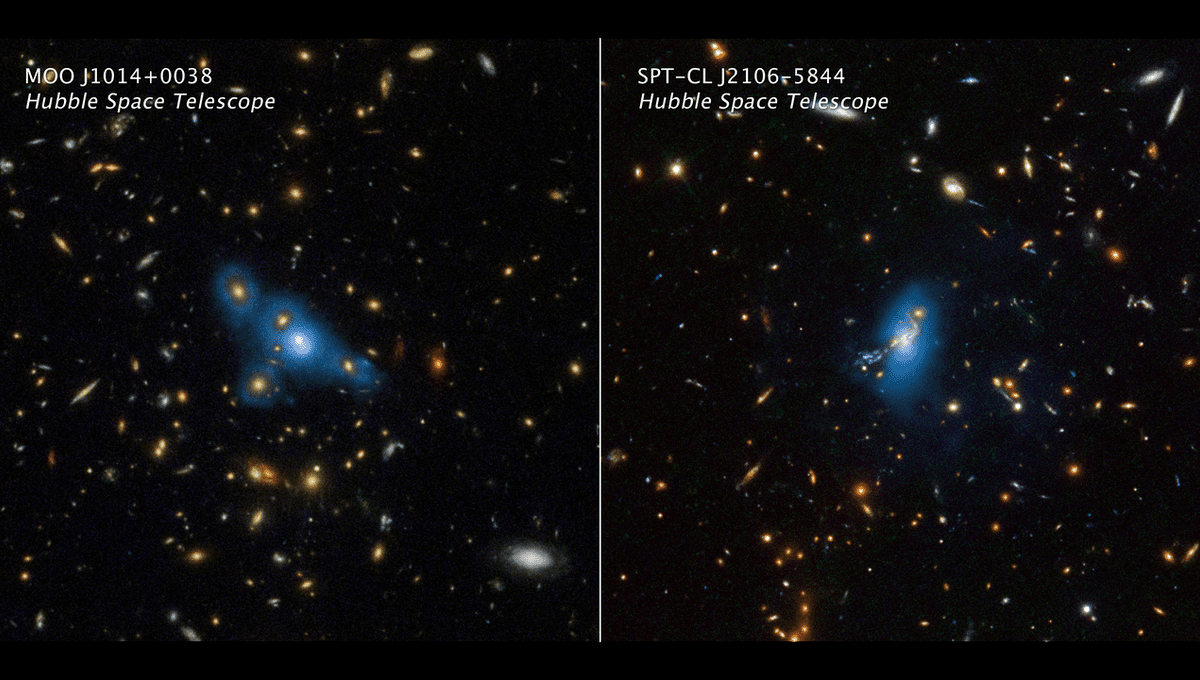
Clusters of galaxies often have hundreds of members packed together in a relatively small region of the universe. But even in the dark region between these galaxies, the intracluster space, there is a faint glow. This is produced by wandering stars that don’t belong to any galaxy. How they got there is a mystery – but new Hubble observations seem to have pointed out something very important.
Possibilities for the origin of these stars usually see calm or violent interactions between galaxies. Mergers can certainly throw stars into wider orbit or even kick them out of the final galaxy altogether. Alternatively, they could have been pulled out of a galaxy due to gravitational interaction over time.
However, observations from Hubble of 10 different clusters at different ages of the Universe show that the amount of intracluster light emitted has not changed much in the last 10 billion years. Those stars have been wandering without host galaxies for a very long time.
“This means that these stars were already homeless in the early stages of the cluster’s formation,” co-author James Jee of Yonsei University in Seoul, South Korea, said in a statement. “We don’t exactly know what made them homeless. Current theories cannot explain our results, but somehow they were produced in large quantities in the early universe. In their early formative years, galaxies might have been pretty small and they bled stars pretty easily because of a weaker gravitational grasp.”
If the stars were ripped from their galaxies due to mergers, they wouldn’t have time to scatter across the whole cluster. If it was due to regular stripping, the amount of light should be increasing over time, not staying the same. It’s likely they were already in place billions of years ago and not many were added to them over time.
“If we figure out the origin of intracluster stars, it will help us understand the assembly history of an entire galaxy cluster, and they can serve as visible tracers of dark matter enveloping the cluster,” added Hyungjin Joo of Yonsei University, the first author of the paper.
Intracluster light is another approach to studying the distribution of dark matter. This is a hypothetical substance that holds galaxies together in a certain shape but it is invisible. By using the distribution of this light, one can trace where dark matter is. Future studies might also employ JWST, which has recently demonstrated its capabilities at observing intracluster light.
These findings were published in the journal Nature.
Source Link: Ghost Intracluster Light Comes From Lost Stars Between Galaxies